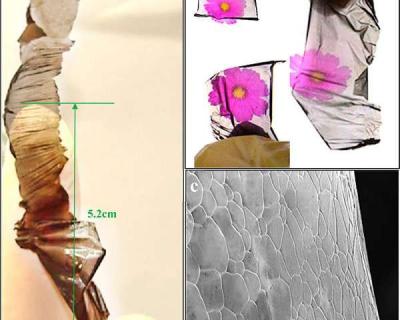Researchers at the University of Guangzhou, China, managed to improve the capacitance of supercapacitors by nearly 1000-fold compared with that of the laminated or wrinkled CVD graphene-film-based supercapacitors. To achieve this, the researchers integrated transparency into freestanding, flexible graphene paper (FFT-GP). These supercapacitors's capacitance is also about ten times better than previously reported values for transparent and flexible supercapacitors based on pure carbon materials. However, some carbon-based nontransparent supercapacitors still perform better than the FFT-GP-based transparent supercapacitor.

The improved performance is mainly based on the prism-like graphene building blocks that the FFT-GP is made of. The hollow structures of the graphene that give the material its transparency also provide additional space for chemical reactions to occur compared to other materials. Also, the aligned and interconnected prism-like structures provide a wide open path for ions and electrons to travel along and the good charge transport leads to an overall better performance.
While the FFT-GP seems as bit wrinkled and has a slightly alarming color, the researchers demonstrated that it can withstand more than 1,000 bending and stretching cycles with little capacity loss and still transmits light. The researchers also demonstrated a tandem device made of two integrated FFT-GP-based supercapacitors placed over a smartphone screen (to demonstrate transparency) that lights up an LED.
The material's combination of flexibility, transparency, electrical conductivity and large surface area may be beneficial for many applications, like stretchable and transparent solar cells, rolled-up displays, and self-powered and wearable optoelectronics. The hollow structure of the prism-like graphene could also be exploited for other uses, such as storing more light-absorbing dye in dye-sensitized solar cells. The researchers plan to explore these possibilities in the future.